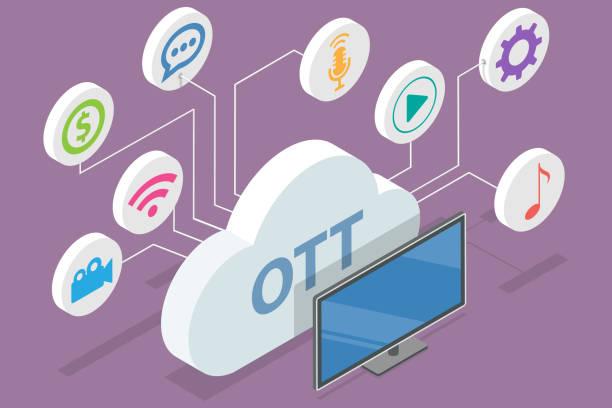
How to develop an OTT App?
Developing an OTT (Over-The-Top) app can be a complex and multi-step process.
Steps in developing OTT app

1. Establish your objectives and strategy:
• Determine if your OTT app will be used for video streaming, audio streaming, or both.
• Determine your target audience's preferences.
• Conduct market and competition research to identify trends and opportunities.
• Establish your monetization plan (subscription, adverts, in-app purchases, and so on).
• Establish specific goals and objectives for your app development process.
2. Acquisition and Management of Content:
• Obtain content rights and licences for the media you intend to sell.
• Sort through and categorise your content library.
• Use a content management system (CMS) to manage metadata, tags, and search capability.
3. Select the Technical Stack:
• Choose the platform(s) you wish to target (iOS, Android, web, smart TVs, and so on).
• For each platform, choose the right technological stack (programming languages, frameworks, and libraries).
• Include function for user registration, authentication, and account management.
• Include video/audio streaming options, such as adaptive bitrate streaming, to ensure seamless playing.
• Include functions such as search, playlists, favourites, recommendations, and social sharing.
• Ensure the speed, scalability, and security of the app.
• Integrate your preferred revenue model (subscriptions, adverts, in-app purchases) into the app.
• Create wireframes and prototypes to track the structure and flow of the app.
• Create a user interface (UI) that is both intuitive and visually appealing, with a focus on easy access and content access.
• Create a responsive design that performs effectively on a variety of devices and screen sizes.
• Begin the development process by coding the front-end and back-end components of the app.• Set up analytics tools to measure data such as user interaction, content popularity, and monetization.
• If applicable, implement in-app purchase options.
7. Test and Improve
• Perform out thorough testing to verify that the app works correctly across several devices and platforms.
• Identify and resolve any bugs, crashes, or performance concerns.
• Collect user input and beta test to get insights and make required modifications.
8) Deploy and launch
- Submit your application to the appropriate app stores (Google Play, Apple software Store) and other distribution channels.
- Establish a marketing and promotional strategy to raise awareness of your OTT app and attract users
9. Maintain and Improve
After launch, monitor the app's performance and user input.
• Update and upgrade the app on a regular basis with new features, bug fixes, and security updates.
• Keep informed of evolving technology and user trends in order to improve the app's functionality and user experience.
Bottom line
It should be stated that creating an OTT app requires technical competence, such as programming abilities and understanding of media streaming technology. If you don't have the requisite capabilities in-house, you may consider collaborating with a development team or hiring OTT app developers.
Customer support service by UserEcho

